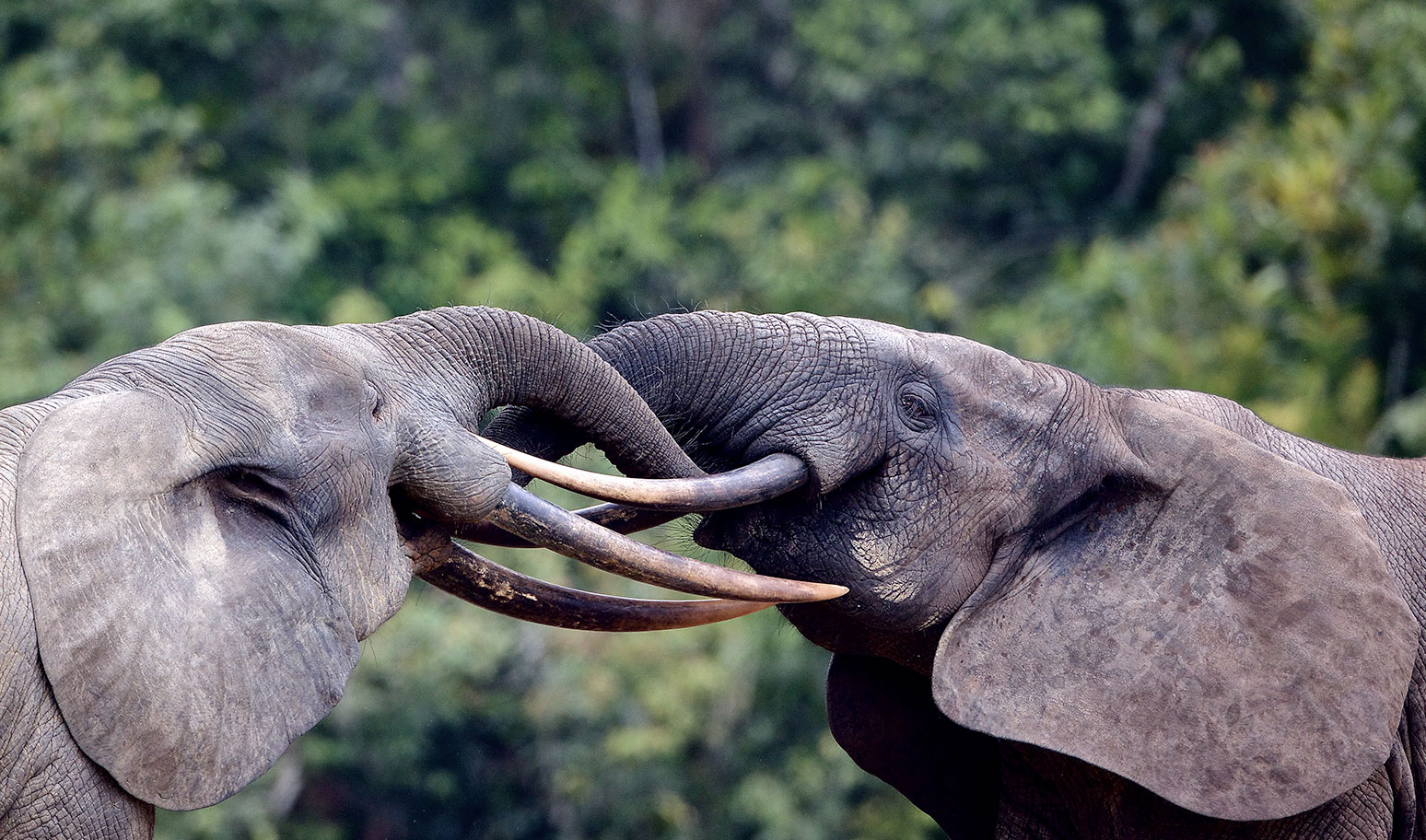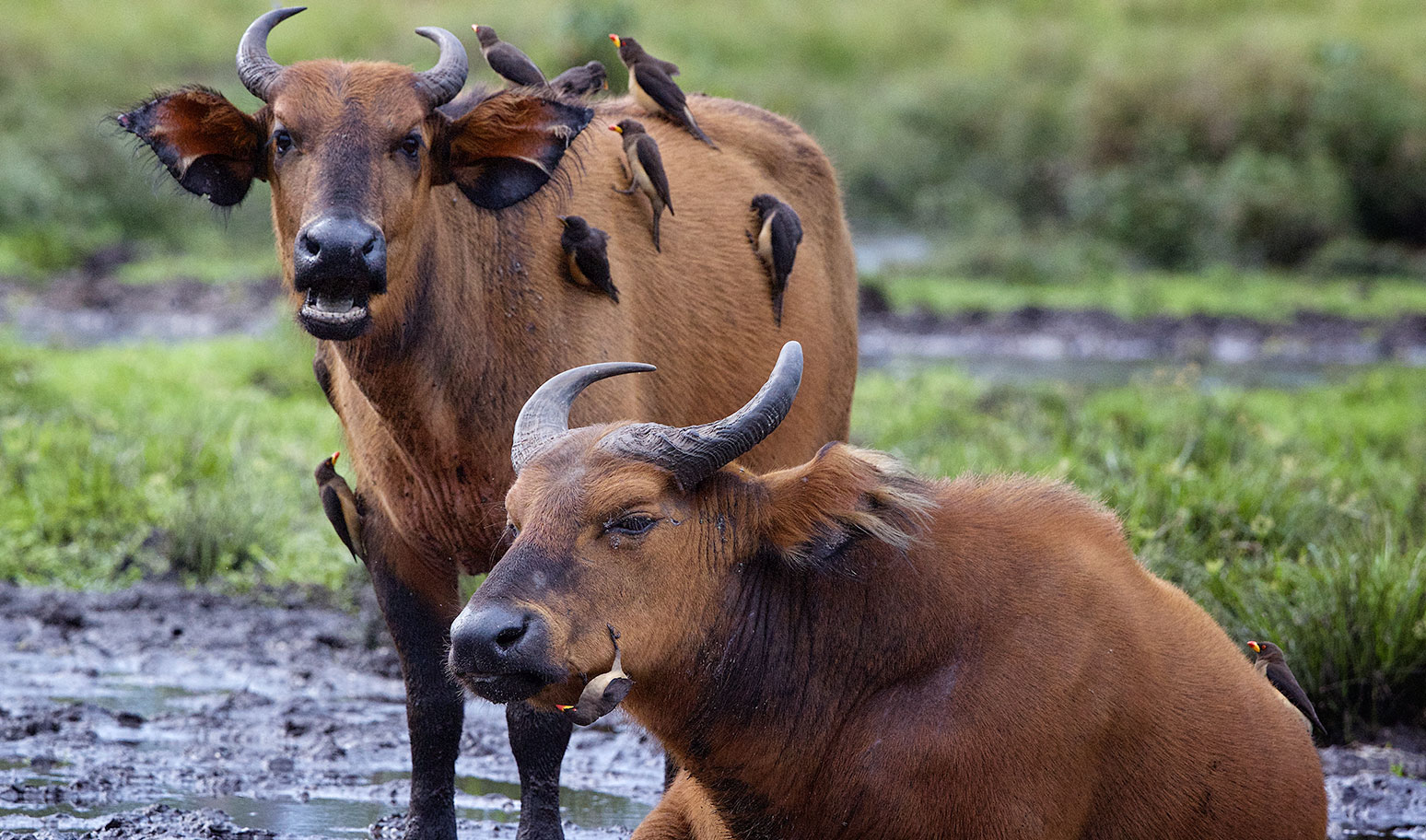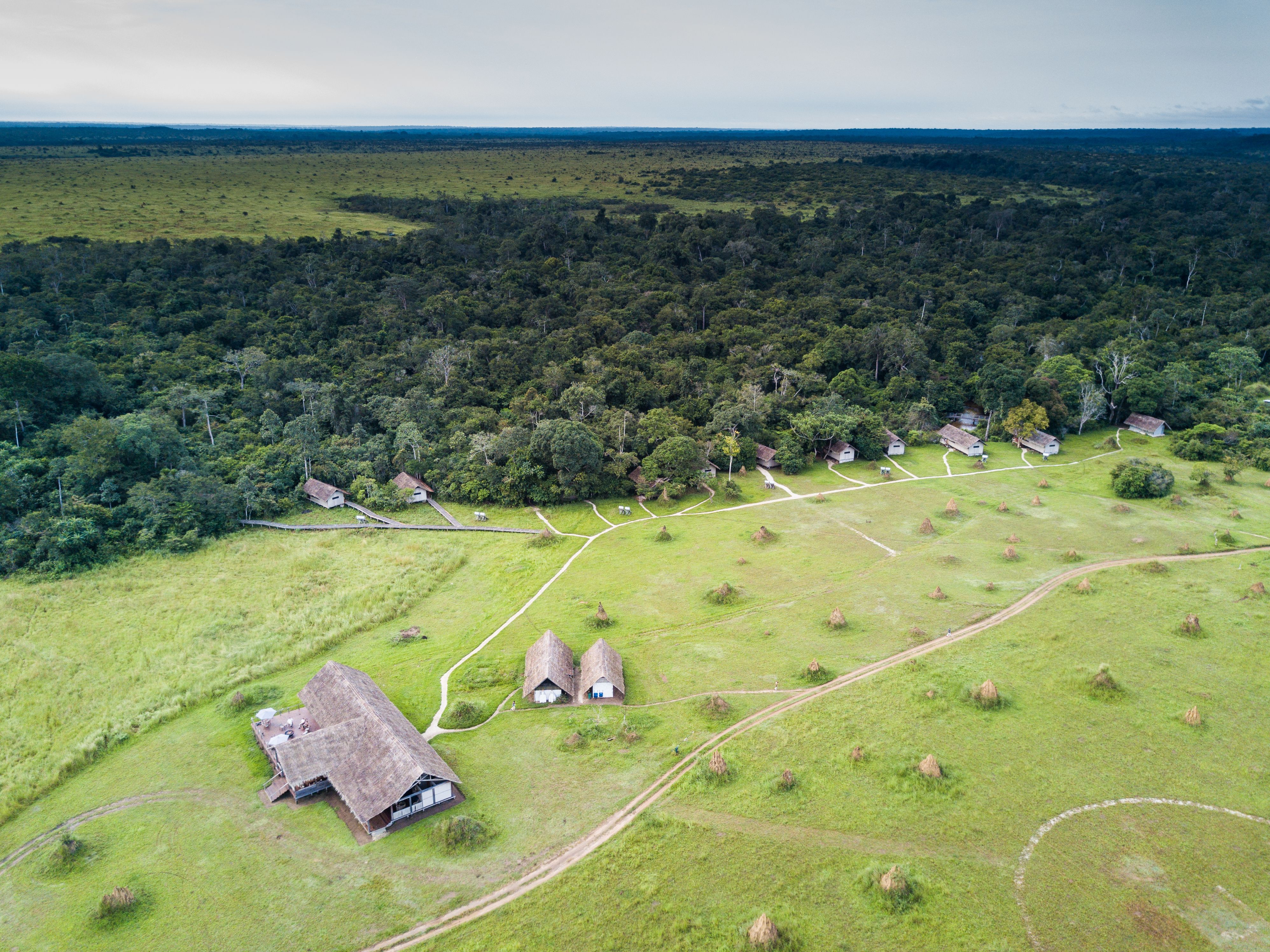
The animals in the Congo Basin rumble wildlife you my have seen before but the species are unique to this part of Africa

Western
Lowland Gorilla
Did you know that there are 4 species of gorilla in Africa? Mountain Gorillas are the most well-known, and are found in Rwanda, DRC and Uganda, as are the eastern lowland gorillas.
Cross-river Gorillas can be seen along the Cameroon/Nigeria boarder and over 100 000 western lowland gorillas, Odzalas gorillas, call the forest between the Ubangi River and the Atlantic home.
Western lowland gorillas have shorter fur due to their warmer climate, well as being more arboreal and active, seeking out fruits in the tree tops. The group we work with are identified by the silverback at the head of each family and each gorilla tracking

Forest
Elephant
Smaller than their savanna cousins, the African forest elephant weights up to 3.5 tonnes (opposed to 8 tonnes). Considered a forest-adapted subspecies for many decades, the forest elephant separated some 2.2 million years ago with a different shape of the ear, longer, straighter tusks and different ivory.
Behaviourally, forest elephants live in smaller herds and are nocturnal (probably earned as a result of hunting pressure) with about half the birth rate of savanna elephants. They favour a fruit-base diet.

Forest
Buffalo
This is the smallest subspecies to the African buffalo. Related to the Cape buffalo found in the plains and thickets of southern and east Africa, the forest buffalo weighs in at 250 to 320 kgs (up to 600 kgs less than Cape buffaloes).
While their Cape cousins are certainly larger, forest buffaloes are considered more beautiful with their reddish-brown hide, dark faces, gentle horns and soft, tufted ears.
The natural environment for forest buffalos varies from dense forest to open grasslands and marshy, wet bais, perfect to wallowing.
They can be found in smaller herds of 3-30 individuals for easy movement through the forest, compared to Cape buffalo herds which can number over a thousand. Forest buffaloes rarely leave their herd and may stay in the same herd their entire lives.
Key Species Profiles:
Western Lowland Gorilla
- Four gorilla species in Africa; Mountain Gorillas (Rwanda, DRC, Uganda), Eastern Lowland Gorillas, Cross-river Gorillas (Cameroon/Nigeria border), and Western Lowland Gorillas.
- Over 100,000 Western Lowland Gorillas inhabit the area between the Ubangi River and the Atlantic.
- Western Lowland Gorillas have shorter fur adapted to a warmer climate, are more arboreal, and active in seeking fruits in tree tops.
- Groups are led by a silverback, identified during gorilla tracking.
Forest Elephants
- Smaller than savanna elephants, African forest elephants weigh up to 3.5 tonnes.
- Forest elephants are considered a forest-adapted subspecies with distinct ear shape, longer tusks, and different ivory.
- Separated from savanna elephants 2.2 million years ago.
- Behaviorally, they live in smaller herds, are nocturnal, and have about half the birth rate of savanna elephants.
- Prefer a fruit-based diet.
Western Buffalo
- Smallest subspecies of African buffalo, weighing 250 to 320 kgs.
- Related to Cape buffalo but distinct with reddish-brown hide, dark faces, gentle horns, and tufted ears.
- Inhabit diverse environments from dense forests to open grasslands and marshy wet bais.
- Form smaller herds (3-30 individuals) for easy movement through the forest.
- Unlike Cape buffalo, forest buffaloes rarely leave their herd and may stay in the same herd for their entire lives.
Western Lowland Gorillas:
Habitat:
- Widely distributed throughout the Congo Basin. Humid, dense tropical forests, swamp forests, dry forests, forest clearings and edges.
Utility:
- Integral role as a flagship species for conservation efforts in the region.
- Significant ecotourism appeal, contributing to local economies.
- Highly social animals, living in groups called troops.
- Communication through vocalizations, body language, and facial expressions.
- Dominant silverback male leads the group, responsible for protection and decision-making.
- Primarily herbivores, consuming fruits, leaves, stems, and occasionally insects.
- Display complex foraging behavior's, using tools such as sticks to extract insects from nests.
- Seed dispersers with a crucial role in maintaining biodiversity.
- Influence vegetation dynamics through their feeding habits, shaping the structure of the forest.
- Habitat loss due to logging, agriculture, and human settlement.
- Poaching for bushmeat and illegal pet trade.
- Diseases, including those transmitted by humans, pose a threat to their populations.
- Population decline due to habitat destruction and hunting.
- IUCN Red List status: Endangered.
- Conservation efforts include habitat protection, anti-poaching measures, and community engagement.
Forest Elephants:
- Central and western Africa. Humid tropical forests, swamp forests, dry forests, shrubland, and savannah.
Utility of Forest Elephants:
- Carry tree seeds through the jungle, promoting plant growth and loosening the soil.
- Create pathways used by other animals.
- Enjoy bathing, distributing minerals in the soil.
Lifestyle of Forest Elephants:
- Small groups of three to six individuals, consisting of related females with offspring; males are solitary.
- Communication over long distances through low-frequency sounds (below the human audible range).
Feeding Habits:
- Varied and nutritious diet: leaves, fruits, branches, bark.
- Approximately 150 different food items, including protein-rich stone fruits.
- Contribute to the spread of plant seeds through digestion and excretion.
Ecological Significance for the Forest:
- Essential for the well-being of certain tree species as they disperse seeds.
- Researchers estimate that almost 30 percent of all rainforest giants are "planted" by forest elephants.
Threats and Population:
- Drastic decline of African Forest Elephants by 86 percent in the last 30 years.
- Main causes: poaching and loss of rainforests.
- Critical endangerment: Classified as "critically endangered" on the IUCN Red List.
- Urgent appeal to end poaching and protect their habitat to ensure survival.
- In the last 50 years, the overall population of African elephants has plummeted from 1.5 million to approximately 400,000.
Forest Buffalo:
- Require abundant grass, shade, and water. Prefer a mosaic of savannahs interspersed with patches of forest, occasionally use open grassland during their seasonal movements.
Utility of Forest Elephants:
- Not extensively domesticated.
- Limited use by local communities for meat and hides.
Social Behaviour:
- Generally more solitary compared to savannah buffaloes.
- Nocturnal activity is common
- Established territories, with occasional small groups
Feeding Habits:
- Navigates through the dense understory vegetation.
- Feeds on a variety of vegetation, including leaves, grasses, shrubs and may consume aquatic plants.
Ecological Significance:
- Seed dispersal through their feeding habits.
- Influences vegetation structure and dynamics in the forest.
Threats and Population:
- Habitat loss due to deforestation poses a significant threat.
- Human-wildelife conflict and hunting contribute to population decline.
- Population estimates are challenging due to the dense forest habitat.

We love teaching you about the magic of Odzala-Kokoua National Park.
If you have any further questions, please visit our comprehensive FAQ section.